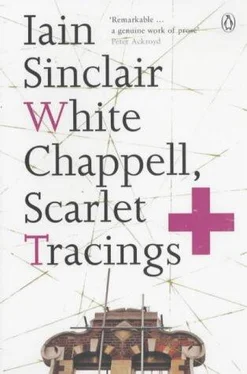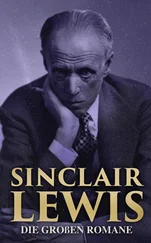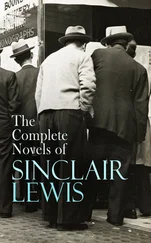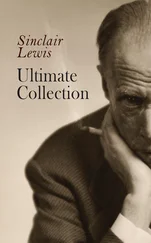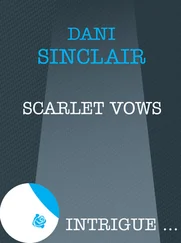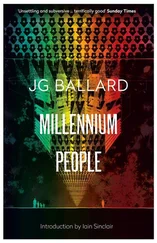But Joblard’s heavy odd-paned windows were immovably fixed in ancient paint; a small coal fire red in the grate. He motioned me to his best armchair; we ate.
A surgery of tiny bottles, instruments, tubes, wires; a museum of stones, pelts, stuffed animals, hunters neutralised and grinning with the falsest of teeth; brass candlesticks; sepulchral clocks. So much of the past had been brought into these rooms that the air was smog and bistre; bone dust powdering his scalp, beard shadows set about our faces.
The hand twitched at the muffin bell to summon Mrs Hudson. Who seemed, in fact, to be present — for as the fire died the door would open and a stooping possessed man, affable but unfocused, would appear with a fresh coalbucket. The ash from a cigarhead detached — but before it reached the carpet it was swept into a pan by a diminutive, smiling, utterly sudden woman; so discreet that she was gone, clicking, before we had acknowledged her. The couple were like long resident poltergeists: we had strayed onto their territory and were to be served, unquestioned, but with no superfluous homage, no trace of irony.
There may have been other inhabitants, the house was tall, long windowed, calm — but they were not to be seen. Once some kind of animal manifested, a heap of old black fur, nodding-headed, half blind; slid a few feet towards the fire before being hurtled backwards and out on an invisible leash, the little woman clucking in the doorway.
From the front window: a few trees, a grass patch, sour clay and gravel, and beyond that, distant warrens of dark brick, unlit: under sentence.
Not having a violin or seven per cent solution within reach Joblard offered a clay pipe, himself sucking and digging at something more theatrical, shag soaked in rum. Time was brown with us, simmering, juicy. Smoke twisted into questions. Blue grey lights ran veins into the ceiling.
‘I think,’ said Joblard, indicating with his pipestem a copy of Stephen Knight’s book, Jack the Ripper, The Final Solution , ‘that we have been saved a great deal of donkey work. This scenario is remorselessly argued and, since it arrives at the cast-list we have already floated, we can accept it as a workable hypothesis and go on from there.’
‘On?’ I asked. ‘Or back?’
‘There’s something inherently seedy and salacious in continually picking the scabs off these crimes, peering at mutilated bodies, listing the undergarments, trekking over the tainted ground in quest of some long-delayed occult frisson. I abhor these hacks with their carrier bags of old cuttings.
‘If Mr Knight had been a chemist not a journalist I wonder if he would have chosen to describe any solution as “final”. A solution, according to my dictionary, is “the act of separating the parts, specially the connected parts of any body”. Unfortunate that. “The dissolving of a solid in a fluid; release; deliverance.”
‘This is precisely what Knight’s explanation does not procure. We are informed, heated, drawn into a collaboration with his version of the truth. But released and delivered? I think not. I don’t think he understands that any delivery is required.
‘Or what monster might result from that bloody-handed parturition?
‘We acknowledge that there were five prostitutes killed by, or under the instruction of, Sir William Gull. A coach was involved, and a coachman, John Netley. The third man remains vaporous and loose faced. The events took place between August and November, 1888, in a specific location, Whitechapel.’
He paused, ‘I like the idea of the grapes, too.’
He took up a limestone pebble from the table and twisted it nervously in his hand.
‘Was this any more than a local conspiracy? Or is the cycle even now turning on us? As the century dies will another pattern of sacrifice be demanded? Do we slowly begin to understand only because we are about to become performers in the same blind ritual?’
Our conversation progressed in spasms and random leaps: dead frogs on an electric shelf. ‘From one drop of water,’ wrote Holmes in his article, The Book of Life , ‘a logician could infer the possibility of an Atlantic.’ But we were not logicians. We darted, snapped, disbelieved ourselves, turned back: always using the evidence of the past as our justification.
‘I found something curious in Michael Harrison,’ I began, ‘published three years before Knight. Harrison claims, “What Sir William Gull had become to the Royal Family, Nobility and Aristocracy of Great Britain, in the field of medicine… Sherlock Holmes — even by the mid-’Eighties was well on the way to becoming in the field of protecting the Great from their enemies’ malice…”
‘I think this is a better entry: by way of the shape that is unconsciously written into the text. What matters is what they don’t say; but what is coded there, all that wonderful unexplained detail, like a Gothic Cathedral. That is how these books ensnare us in an addictive grip.
‘Peel down Study in Scarlet or Jekyll and Hyde or Mystery of a Hansom Cab and out come the prophetic versions. Beneath the narrative drive is a plan of energy that can, with the right key, be consulted.’
I took a copy of The Sherlock Holmes Long Stories out of my bag and prodded it over towards him. I had treated the text, like a prison censor, carefully blacking out, to uncover the mantic tremble beneath.

‘Obviously this is too blatant a reading. Better to take the flash of single words, cut phrases; let it build its own chain.’
‘Netley. Surgeon. Horse.
London, that great cesspool.
Together in a hansom. Poor devil. Looking for lodgings.
Strange thing.
The second man to-day.
Couldn’t get someone to go halves in some nice rooms.
Perhaps you would not care for him as a constant companion.
A little queer in his ideas.
Well up in anatomy.
Has amassed a lot of out-of-the-way knowledge.
Not a man that it is easy to draw out.
Avoids the place.
Some reason for washing your hands of the matter.
Cold-bloodedness.
A little pinch of the latest vegetable alkaloid.
May be pushed to excess.
When it comes to beating the subjects in the dissecting-rooms with a stick.
Rather bizarre shape.
Verify how far bruises may be produced after death.
Saw him at it with my own eyes.
Not a medical student?
Turned down a narrow lane and passed through
a small side-door which opened
into a wing of the great hospital.
Familiar ground. Needed no guiding.
No doubt you see the significance?
Let us have some fresh blood, he said.
Transparent fluid. Dull mahogany colour.
A brownish dust.
The stains are a few hours old.
Hundreds of men now walking the earth who would
long ago have paid the penalty of their crimes.
A man is suspected of a crime
months perhaps after it has been committed.
His linen examined.
Rust stains, or fruit stains?
Then there was Mason. The notorious.
I have to be careful. I dabble.
Discoloured with strong acids.
Know the worst of one another before they begin.
A mystery is it?
Much obliged to you for bringing us together.’
Читать дальше
